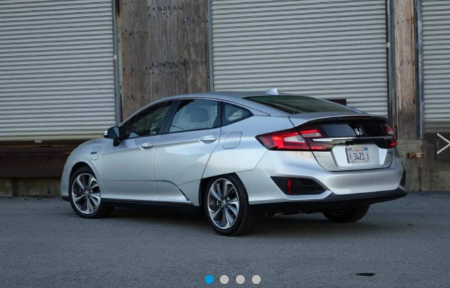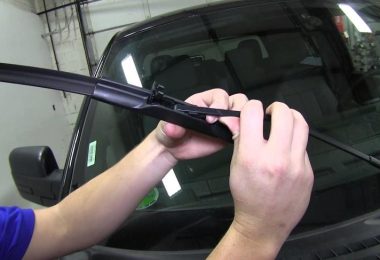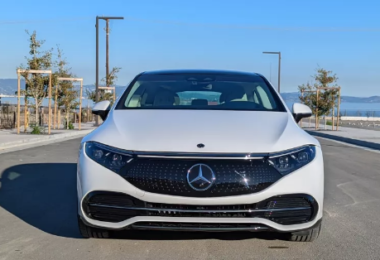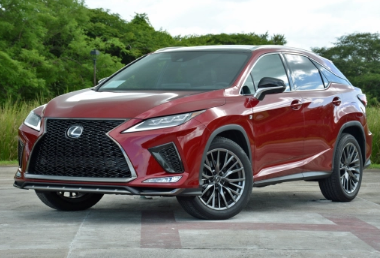The massive Honda Clarity is comparable to one of the pocket-busting Victorinox Swiss Champ versions, which appear to have a tool for every purpose, if the Honda Accord is the Swiss Army Knife of mid-size sedans. There is a lot those knives can do, and there is a lot you need to learn about by reading the owner’s manual.

Honda has a one-size-fits-all solution in the Clarity. One of three cutting-edge powertrains is intended to be housed in its bulbous form, which is admittedly not a selling point. In order to determine whether the Clarity lives up to its claim that it can do it all and where it fits into the hybrid hierarchy, we spent a week commuting in one in the snarling traffic of San Francisco.
The commuter by birth
The plug-in hybrid Clarity, which has a commuter-friendly 48 miles of electric range, is distinguishable from the fully electric Clarity variant, which can travel a modest 89 miles between charges, and from the futuristic hydrogen fuel cell version, which will only appeal to a small portion of California drivers who live close to a fueling station.
The plug-in hybrid, the most popular model, served as our commuter vehicle from Oakland to San Francisco, and we found it to be a tolerably comfortable, roomy, and upscale cruiser. The heavy vehicle ran out of energy when pressed into action for the infrequent high-speed excursions infrequently permitted on Bay Area roadways, despite its claimed 48-mile electric range. The Clarity weighs close to 4,000 pounds, making it difficult for its 1.5-liter, 212-horsepower four-cylinder engine to move it; pressing the accelerator pedal all the way to the floor will result in increased electricity or gasoline use. The engine performed admirably, but we only got 40 mpg in basic hybrid mode. That’s not very good, at all.
The Clarity has a smooth ride because to the substantial curb weight.
When the battery in the Clarity’s plug-in hybrid version runs out, it switches to a conventional hybrid mode, which uses the gas engine as a generator. A mode that allows drivers to save battery power for later usage is included in the drive modes Normal, Sport, and Eco. This mode is useful for lower-stress urban driving that might happen toward the end of a protracted trip.
The Clarity has a smooth ride because to the substantial curb weight. On a twisting road, the soft suspension and light steering don’t help much, but that’s not exactly the point of this fuel-efficient vehicle. At least until its gas engine is awakened for a passing vehicle on the highway, it travels serenely and softly. The droning makes it difficult for the audio system to compensate for a continuously variable transmission (CVT) that wants to push the engine into louder, higher engine speeds for passing.
The EPA assesses the 2019 Clarity Plug-economy In’s at 110 mpg-e when the 48 miles of electric range are taken into account. Once the battery is used up, the vehicle gets 42 mpg combined, which is less spectacular. Again, the 48 mpg combined of the Honda Accord Hybrid makes the Clarity difficult to sell. Customers may wish to compare the Hyundai Ioniq and the Toyota Prius Prime, which are both less expensive than the $37,530 Clarity Plug-In Touring that we reviewed but not quite as well-equipped.
Good for comfort, ok for technology
The engine rumbles clash with the cabin, which is quite decent overall. The Clarity is almost like a luxury automobile in its limits, in contrast to other eco-friendly vehicles (we’re looking at you, Nissan Leaf and Chevrolet Bolt), which sacrifice interior comfort and features in the sake of economy. A motorized driver’s seat, an 8.0-inch touchscreen with Apple CarPlay and Android Auto compatibility, leather and suede-like upholstery, a built-in navigation system that can show the location of charging stations, and an 8.0-inch touchscreen were all standard on our Touring level tester.
The touchscreen is typical Honda stuff from a few years back, so it lacks a volume knob like more contemporary systems from the automaker. That comes as a significant surprise considering that the Clarity’s fundamental design was only introduced in the late 2017 model year. When using the built-in software while traveling, some drivers may find it to be too menu-intensive, and the UI is more practical than attractive.
There is no volume knob because the touchscreen is standard Honda stuff from a few years back.
Thanks in part to an additional rear window that was put into the tailgate, the seats are comfy and the outside visibility is respectable. With 15.5 cubic feet, the cargo room is below average for a hatchback and around average for a mid-size sedan.
Our test vehicle is a good value at $37,530, but for people who aren’t set on a commute devoid of tailpipe emissions, Honda’s Accord hybrid is a better option. If you decide to purchase a Clarity, the base model is $34,330 and includes all of the features we’d deem necessary, including active safety features, cloth seats, and an 8.0-inch touchscreen without navigation.
Rivals
The Clarity’s only immediate competitor at the moment is another type of hybrid. The EPA rates the Toyota Prius Prime’s combined mileage at 54 mpg, which is at least somewhat offset by its limited electric-only range of roughly 25 miles and list price that is nearly $5,000 less than that of a comparable Clarity. However, you might not need to leave the Honda showroom. The Honda Insight is smaller and costs approximately $4,000 less than the Honda Accord Hybrid, which is roughly the same size as the Clarity and costs about $26,300. For shoppers looking for a mix of Honda dependability and hybrid efficiency, both are fantastic possibilities.
Still unsure of what to purchase? View some of our favorite hybrid vehicles.
Calmness of mind
The powertrain is covered by a five-year, 60,000-mile plan, and Honda offers a three-year, 36,000-mile guarantee for the Clarity. No matter the trim level, the Clarity comes standard with a driver’s knee airbag, front, side, and curtain airbags, as well as lane departure warning, front collision warning, lane-keeping assist, and adaptive cruise control. Although it provides a full range of safety measures, so do its competitors.
Summary
The Clarity Plug-In is designed to appeal to a specific fraction of drivers, much like those big Swiss Army Knives. It’s not a horrible pick if your commute is less than 50 miles, you have enough space to park the roughly 193-inch-long sedan, and cargo space is not a need.
Do you need one?
No, the hybrid Honda Accord and Insight are ultimately better deals for the majority of purchasers.
You can also check 2020 Mercedes-Benz GLC-Class first drive review







